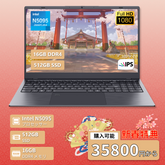A Complete Guide to PD Chargers | Tips for Fast Charging and How to Choose a Laptop
In recent years, laptop charging methods have become increasingly diverse, and PD chargers are rapidly becoming mainstream due to their compact size, light weight, and compatibility with multiple devices. This article explains the basic concepts and core functions of PD chargers, as well as practical tips for fast charging .
This article is useful not only for those who are tech-savvy, but also for those who want to make charging more efficient and make charging easier when they're out and about.

What is a PD charger? Basic concept and features
First, let's clarify the overview of PD chargers. PD (Power Delivery) is a charging technology based on the USB standard, and has three major advantages over conventional computer chargers:
Variable Output for Fast Charging: Dynamically adjusts voltage (5V/9V/12V, etc.) and current to deliver optimal power to connected devices. Laptops can be fast-charged with an output of 36W (12V*3A) or higher, and devices with 45W or higher are recommended for fast charging.
High compatibility with multiple devices: Not only can it charge laptops, but also PD-compatible smartphones and tablets, so it can support multiple devices with one charger. This significantly reduces the amount of charging equipment you need to carry when traveling.
Compact, lightweight, and highly mobile: Products using GaN (gallium nitride) elements are becoming mainstream, and they are becoming smaller and lighter than conventional computer chargers. They are easy to carry when you're out and about, and don't take up much space in your bag.
Difference between USB charging (PD compatible) and AC adapter charging
The two most common methods for charging laptops are "USB charging (PD compatible)" and "AC adapter charging," and there are clear differences between the two in terms of their characteristics and the situations in which they are best suited. By using the appropriate method, you can achieve both efficient charging and device protection.
| Comparison items | USB charging (PD compatible) | AC adapter charging |
|---|---|---|
| Maximum Charging Output | 36W (45W or higher recommended for fast charging) | 65W to 120W (depending on the model) |
| Charging speed (0→100%) | Approximately 2 hours to 2.5 hours (when using 45W charger) | Approximately 1.5 hours to 2 hours |
| Key Benefits | Easy to carry and compatible with multiple devices | Stable charging even during heavy workloads (video editing, gaming, etc.) |
| Recommended usage scenarios | When you are out and about, on the move, or for short-term top-up charging | Long-term use at home or in the office, charging all at once until fully charged |
| Points to note | Charging speed may slow down under heavy loads | Specialized equipment makes it inconvenient to carry around |
For example, if you are on the go and need to charge between client meetings, USB charging with a PD charger is ideal. On the other hand, if you are charging while editing videos at home, an AC adapter will ensure stable charging.
How to Choose the Best Laptop Charger
Choosing a charger is just as important as choosing a laptop. By selecting a charger based on the following two criteria, you can ensure safe and efficient charging.
Match the output wattage to the model
Check your laptop's charging specifications and choose a PD charger that provides at least 36W. Ultra-thin models may require 45W, while high-performance models like gaming laptops may require 65W or more.
Check safety certification and protection features
Choose a product that is PSE certified and ideally has triple protection against overcurrent , overvoltage , and overheating . Avoid cheap, non-certified products, which may damage your equipment.

How to charge your computer via USB: Correct steps and key points
Charging via USB with a PD charger is simple, but following the correct steps will help you maximize the effectiveness of fast charging.
1 Prepare the equipment
Prepare a PD charger with a power output of 36W or more and a charging cable that is USB-IF certified . It is important to replace the cable if it is damaged.
2 Connect correctly
Plug the PD charger into a power outlet, insert one end of the cable into the charger, and then plug the other end into your laptop's USB-C charging port.
3 Check the charging status
Check that the battery icon in the upper right corner of the screen says "PD charging" or "Fast charging."
How to charge faster? Tips for improving efficiency
Rather than simply connecting the charger, you can increase the effectiveness of fast charging by following these points:
★ Stop unnecessary functions - While charging, stop watching videos, playing games, and apps running in the background.
★ Prepare the charging environment - High temperatures can reduce charging efficiency, so charge in a place away from direct sunlight.
★ Use the right charger - The most important thing is to use a PD charger of 36W or higher.
Things to check when you can't charge and reliable support
If you are unable to charge using a PD charger or if the charging speed is abnormally slow, check the following three points in order.
● Check the connection system
Check that the charging cable is securely inserted into the PD charger and the laptop, and that the cable is not damaged or dirty at the contact points. If there is any dirt, wipe it off with a dry cloth.
● Check device compatibility
Make sure your charger has an output of 36W or more and is PD compatible. Charging may not be possible with a non-compatible computer charger.
● Check the status of your laptop
If the battery is completely discharged, try pre-charging it with the AC adapter for 10-15 minutes and then retry. Also check that "Allow USB charging" is enabled in the power management settings.
If the above steps don't resolve your issue, you can refer to the FAQs and troubleshooting guides on the BiTECOOL Support page . We also offer email support with a response time of 24 hours .
All BiTECOOL laptops are compatible with PD chargers and offer high-speed charging at 36W (12V*3A). They are particularly compatible with:
☆ Supports automatic power adjustment - BiTECOOL's power management system automatically detects the output of the PD charger and adjusts the optimal charging power, preventing overcharging and ensuring efficient charging.
☆ Great for mobility - Models like the " Quiet & High-Speed 16G Model 15.6 " are ideal for carrying with a compact PD charger, maximizing charging flexibility when working on the go.
Tips for choosing a laptop: prioritize charging performance
When choosing a laptop, compatibility with a PD charger is an essential point for users who prioritize mobility. When making your selection, be sure to check the following two points:
Clear description of charging specifications: Check that the product page clearly states " PD charging compatible " or " 36W or more charging possible ." If you are unsure, please contact our support team.
Charging port placement: Consider the number and location of USB-C charging ports. Models with multiple USB-C ports offer the convenience of simultaneous charging and data transfer.
Many of BiTECOOL's laptop models are designed to meet the above requirements.
Summary: Optimize your laptop charging with a PD charger
PD chargers are the mainstream for charging modern laptops due to their compact size, light weight, and compatibility with multiple devices. By mastering how to charge your computer via USB and using tips for fast charging , you can maximize charging efficiency.
When choosing a laptop, check that it supports PD charging, and if necessary, use BiTECOOL's reliable support to free yourself from the worry of running out of battery.











Leave a comment
Please note, comments need to be approved before they are published.